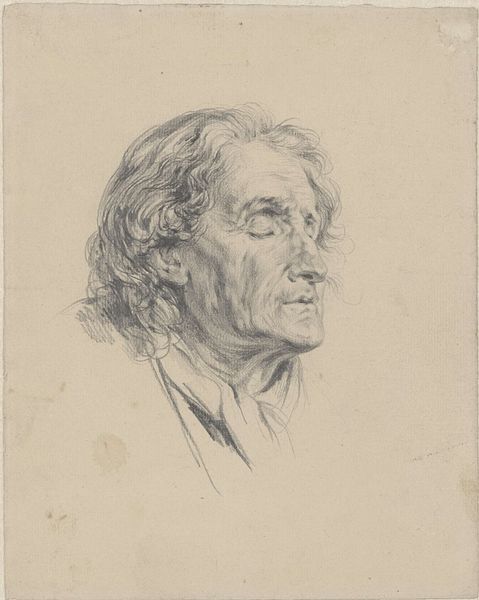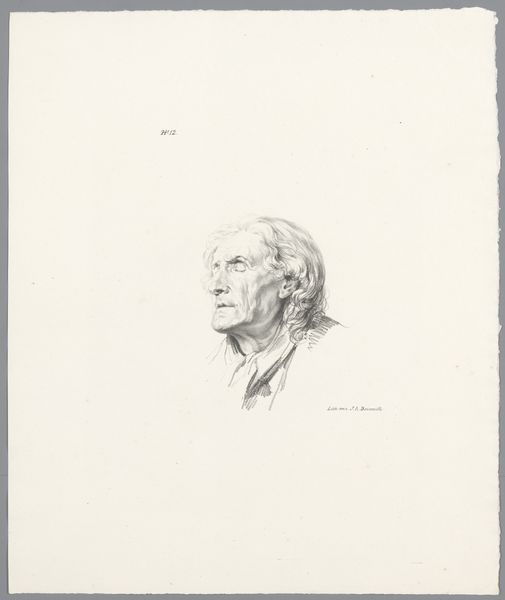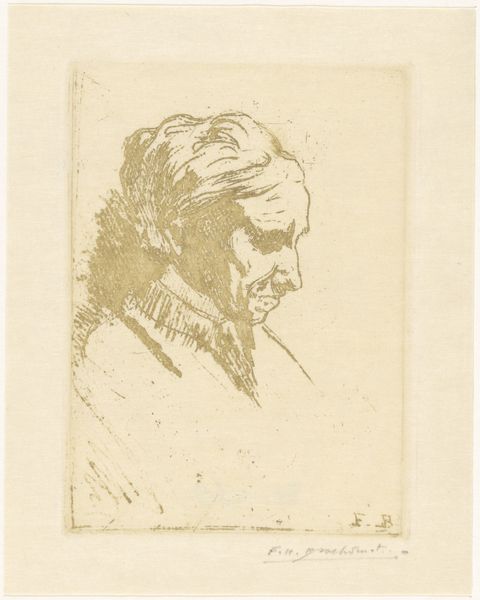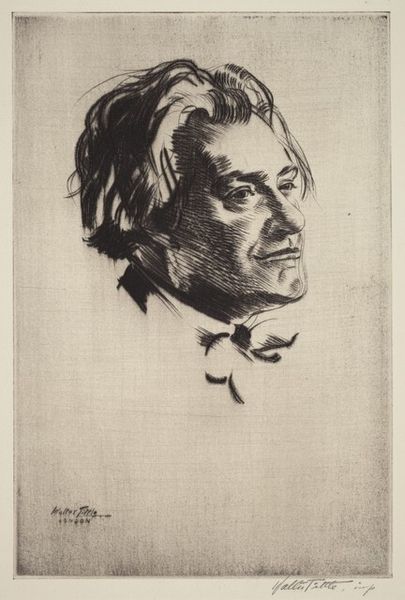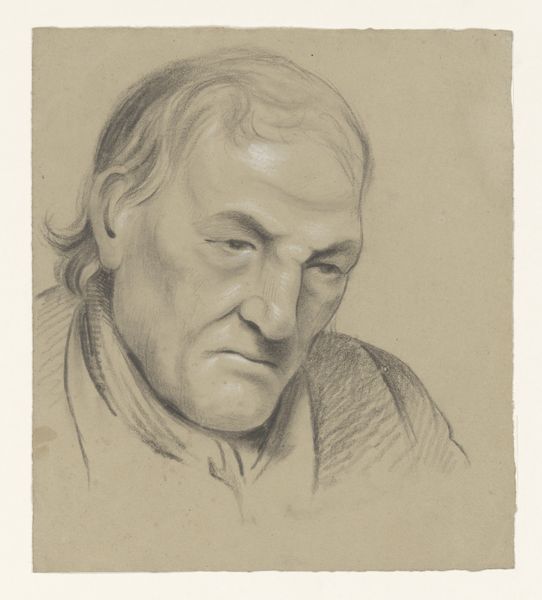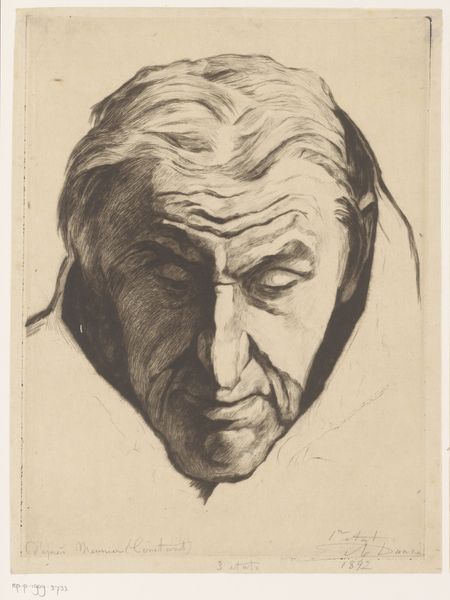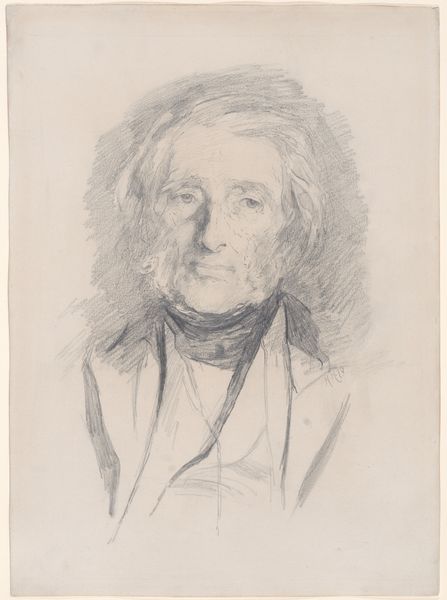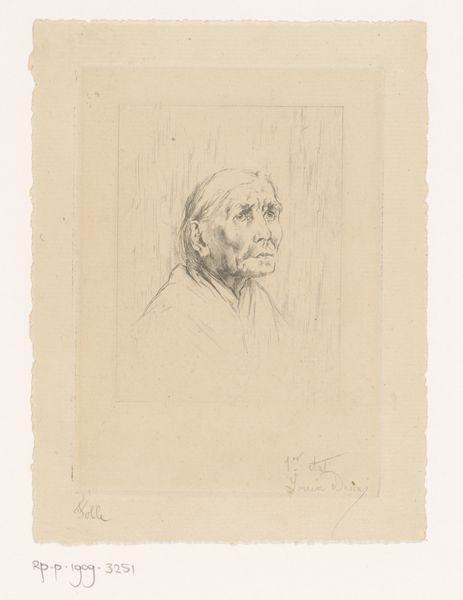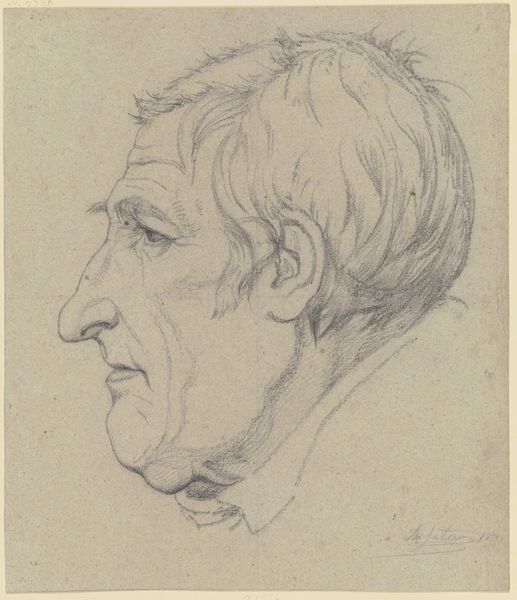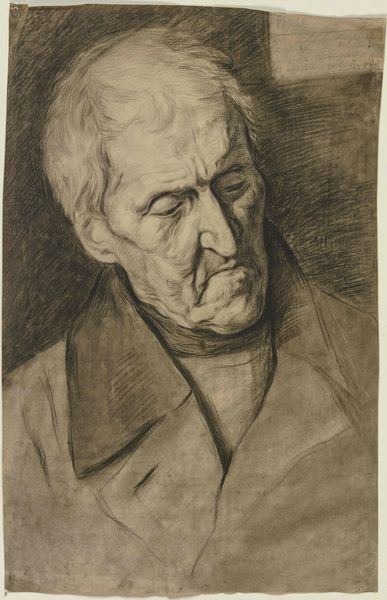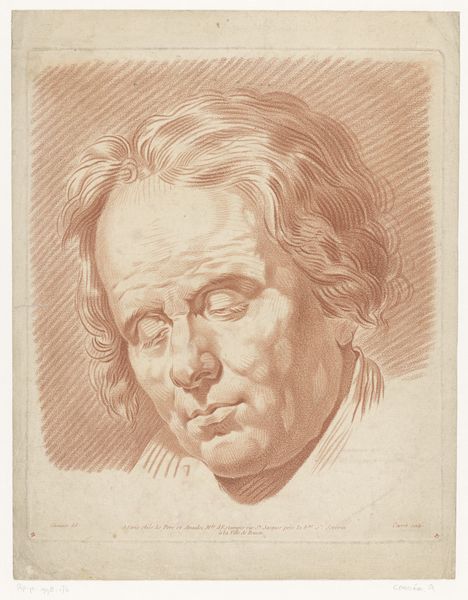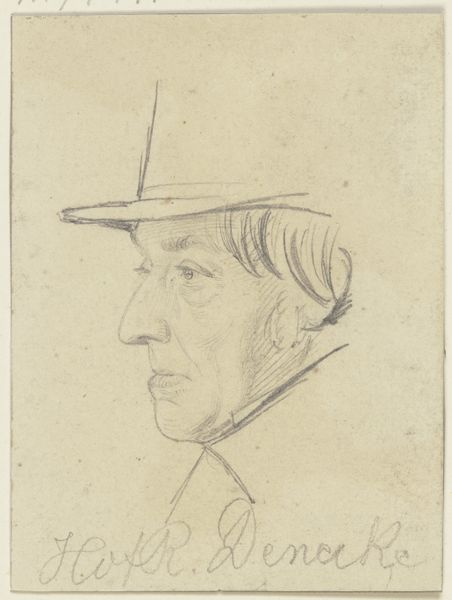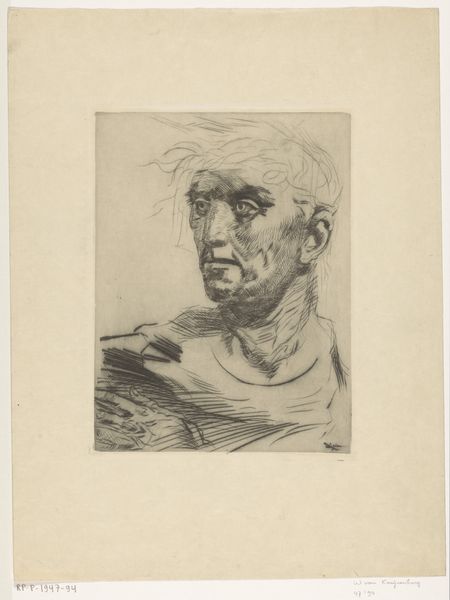
Hoofd van een oude man met gesloten ogen, naar rechts gedraaid c. 1766
0:00
0:00
drawing, pen
#
portrait
#
drawing
#
caricature
#
pencil drawing
#
sketchbook drawing
#
pen
#
portrait drawing
#
academic-art
Dimensions: height 138 mm, width 108 mm
Copyright: Rijks Museum: Open Domain
Editor: This is "Head of an Old Man with Eyes Closed, Turned to the Right" by Pierre Charles Ingouf, from around 1766, housed here at the Rijksmuseum. It's a delicate drawing using pen and pencil. There's a strange vulnerability to it that I find striking. What do you see when you look at this drawing? Curator: What strikes me is the raw, almost brutal honesty of the line work. The etching seems almost to relish in the granular detail. This piece reflects a growing trend in the 18th century: the artistic market demanding works representing all walks of life and various levels of aesthetic finish. We are presented with an unidealized portrait that could indicate new market forces at play; the consumption of art by new bourgeois classes for instance, driving the demand for unvarnished realism. What do you make of Ingouf’s specific technique? Editor: It does seem a bit like he's documenting the texture of aging itself - every wrinkle seems important, right down to each etched line in the sketch. How would his artistic practice been received then? Was it standard for academic art to be so unsparing? Curator: Well, this raw approach may be linked to the development of printmaking at the time, allowing for mass production and consumption. The artist can afford to experiment, depicting what are not ideal forms. A materialist lens urges us to consider that artists may have been developing less traditionally idealized aesthetics due to different, democratized means of artistic distribution. It encourages considering the role of consumption and consumer agency on what are supposedly the great themes in art history. Editor: That makes a lot of sense. I hadn’t thought about the influence of mass production techniques. I guess it makes one rethink "academic" as a straightforward description of style or theme, or even aesthetic values. Curator: Precisely. It prompts questions about how shifts in the processes and economics around the materials can reshape those themes.
Comments
No comments
Be the first to comment and join the conversation on the ultimate creative platform.
